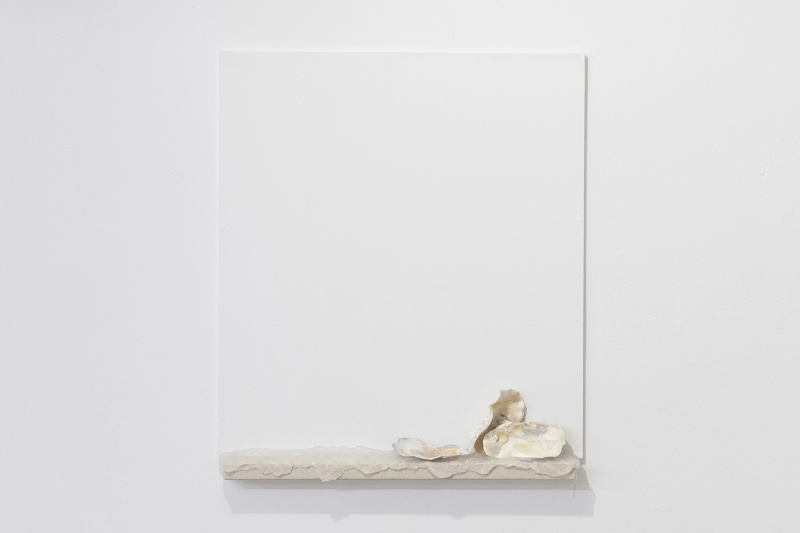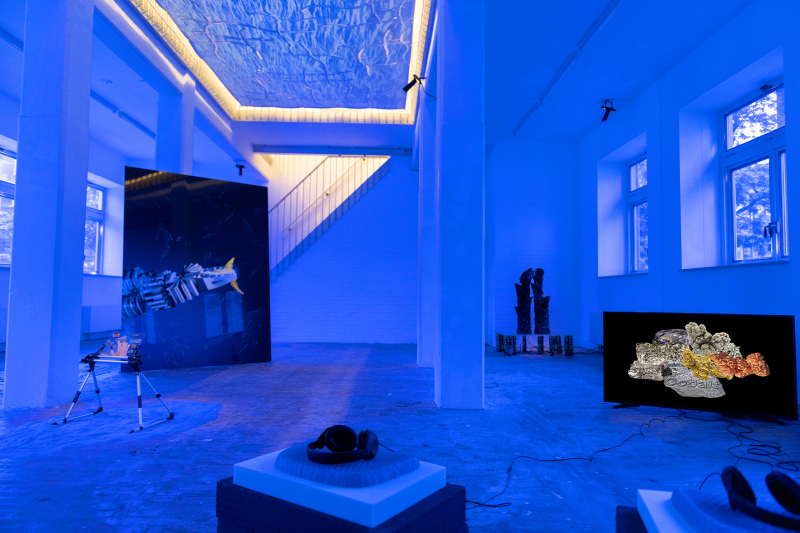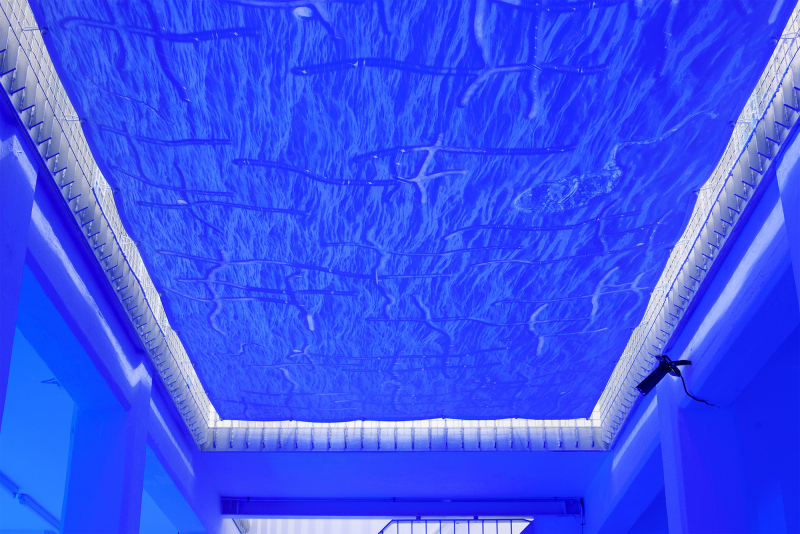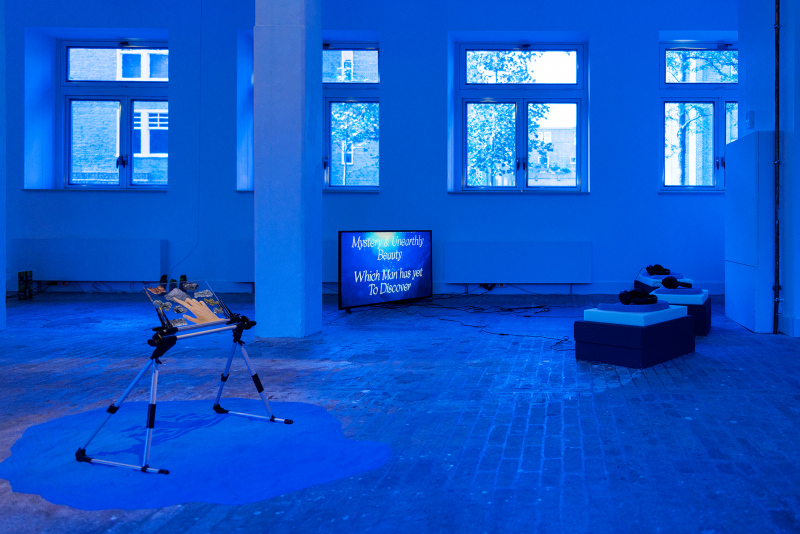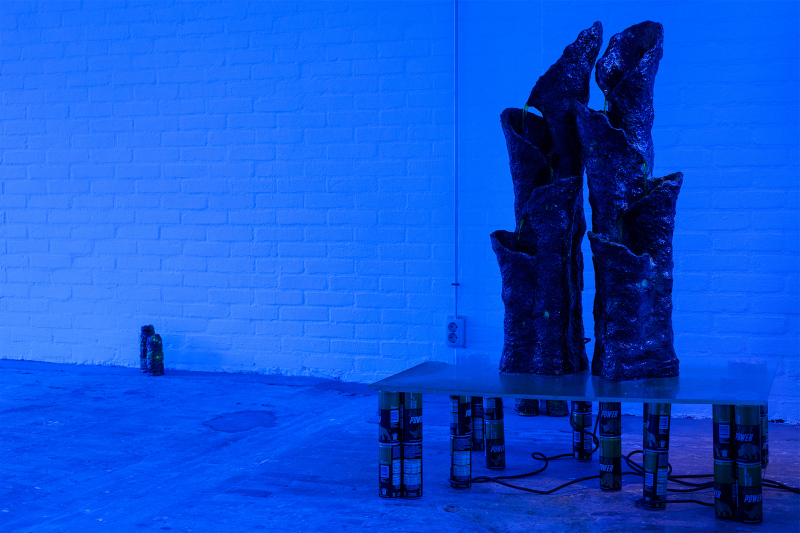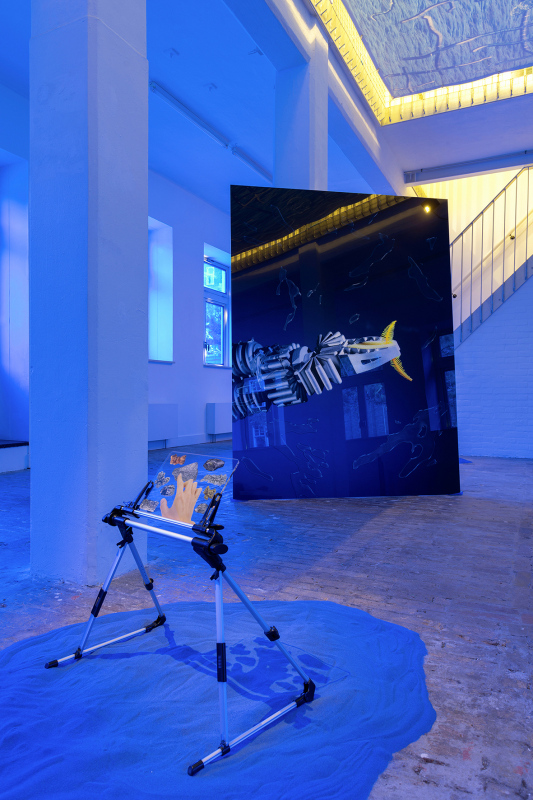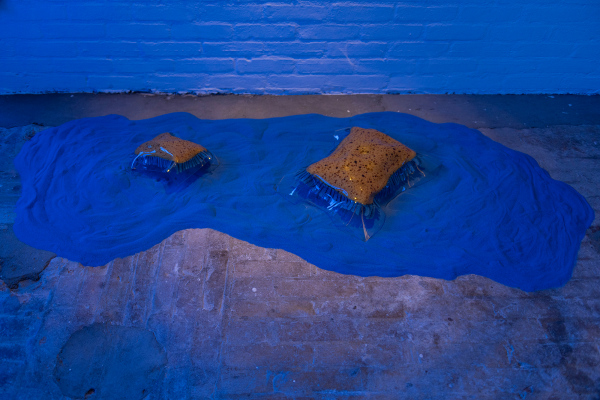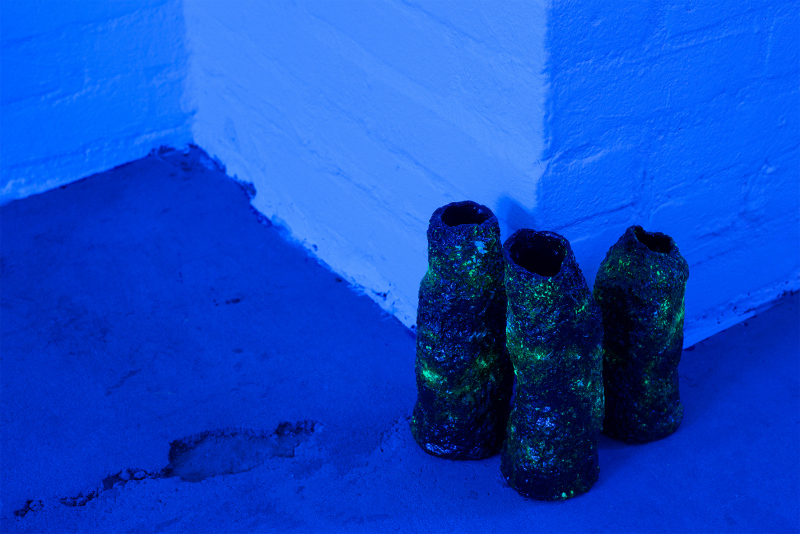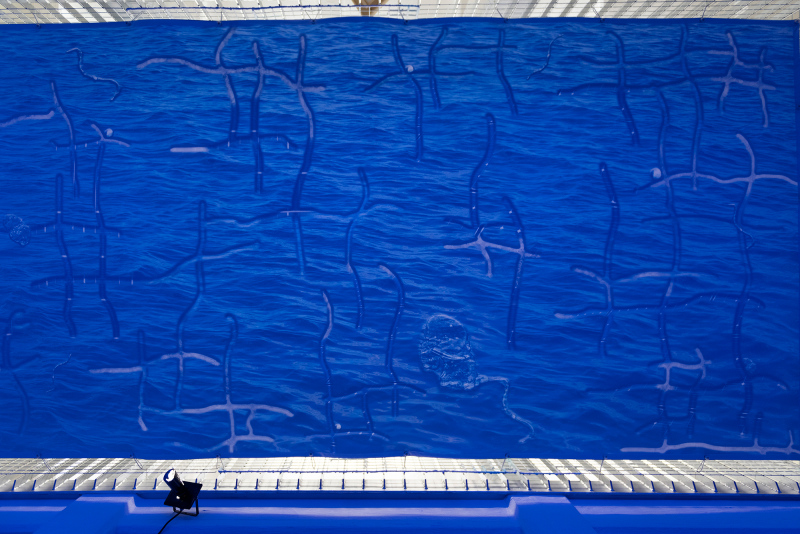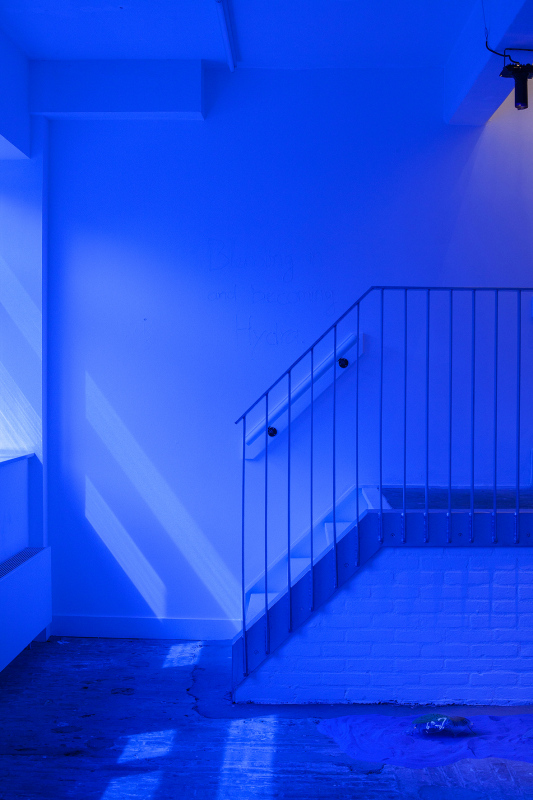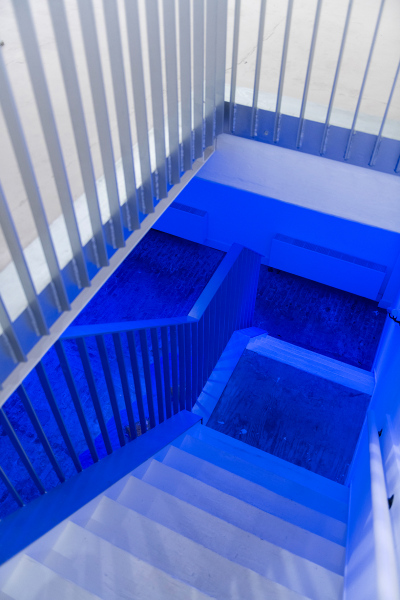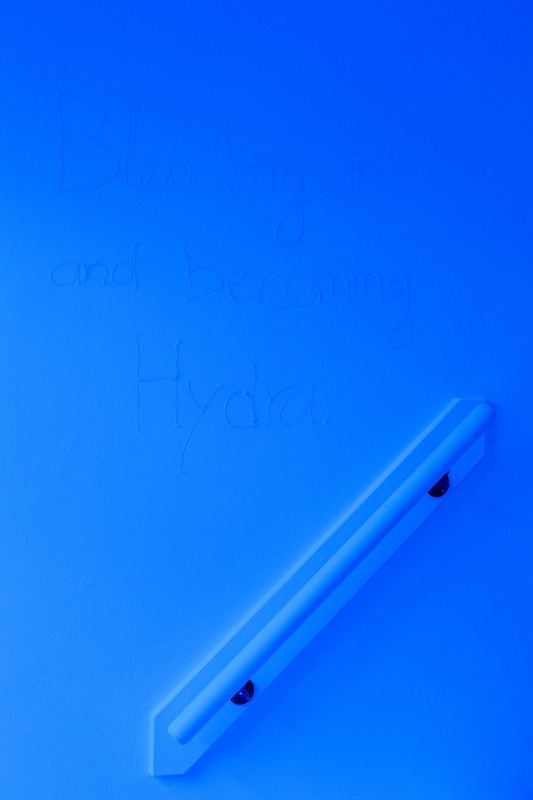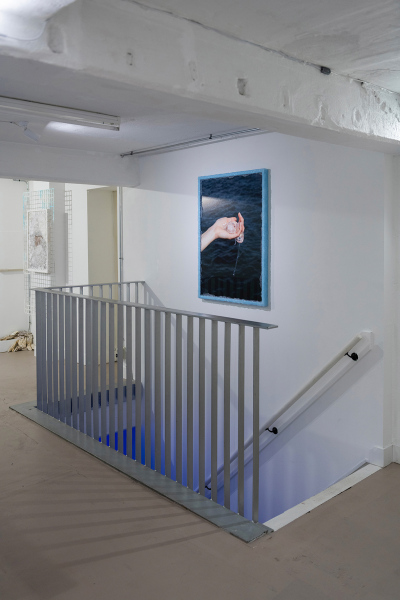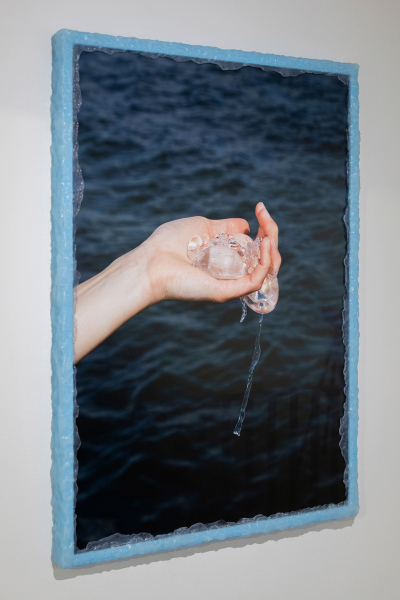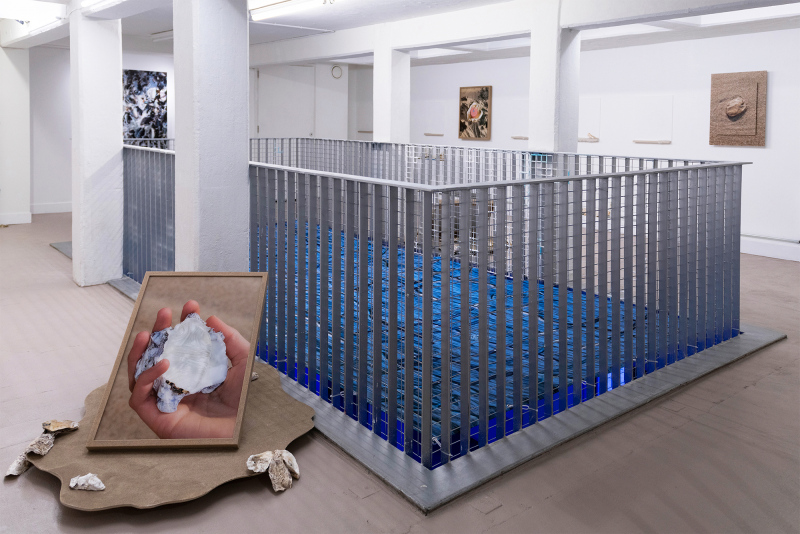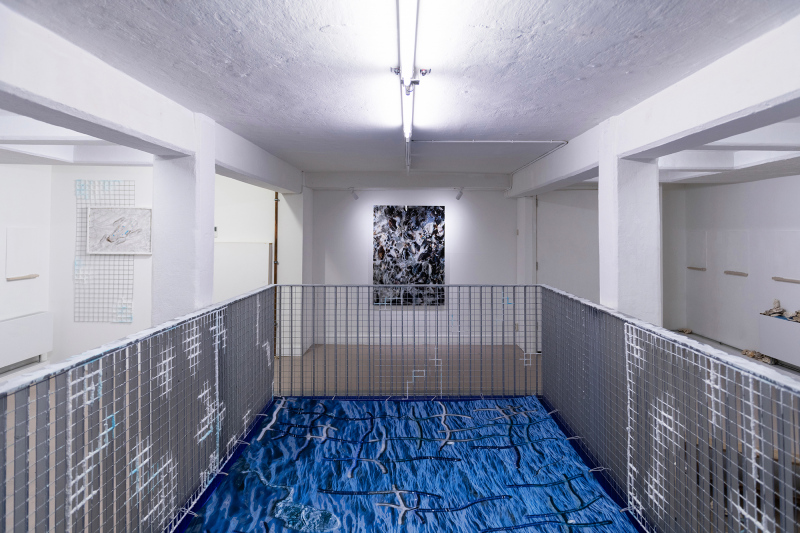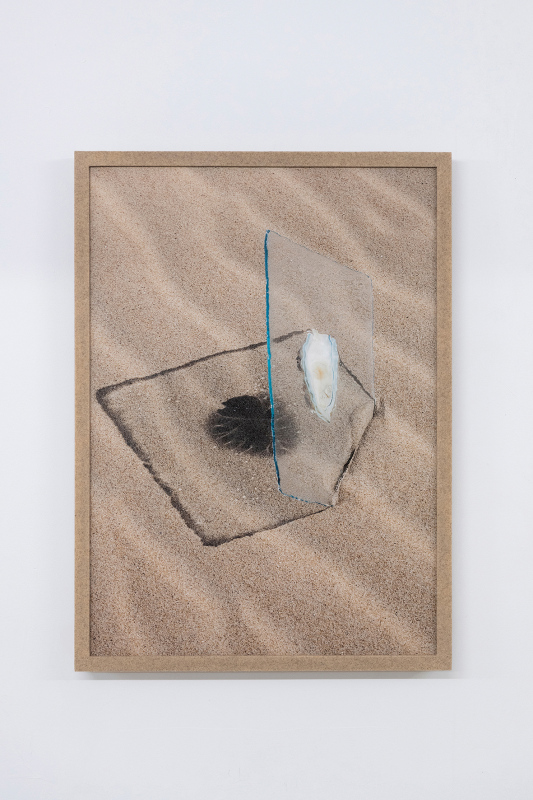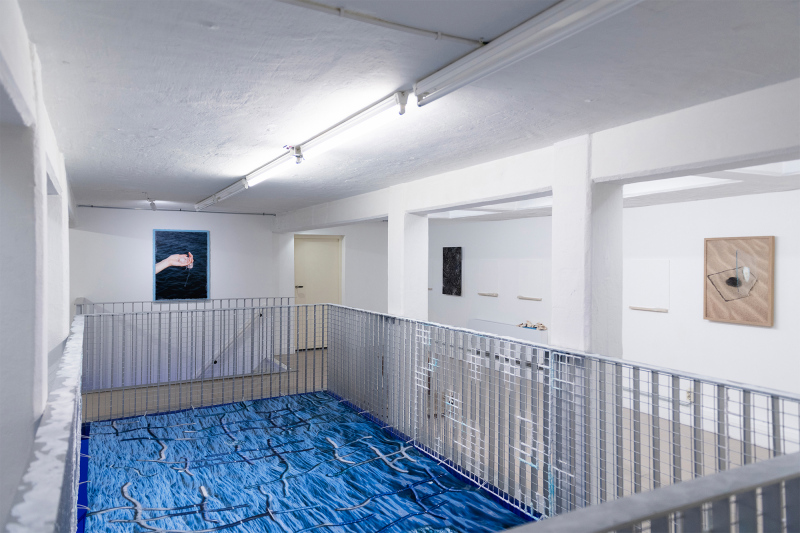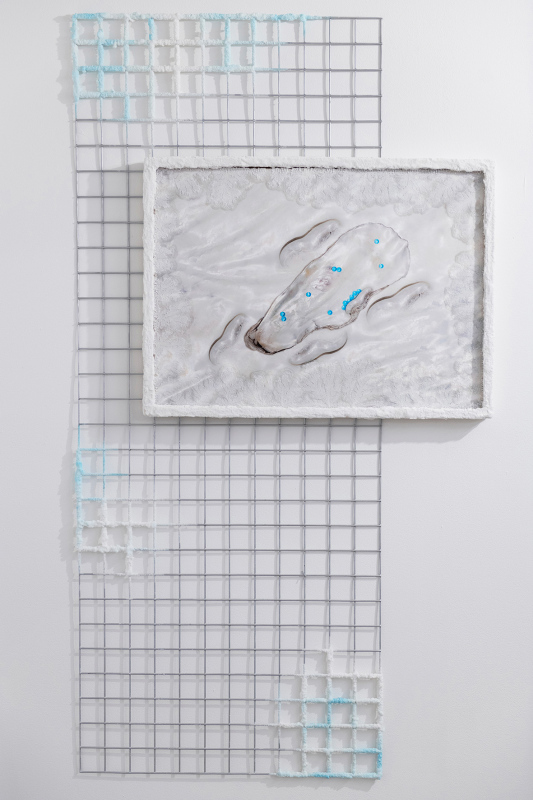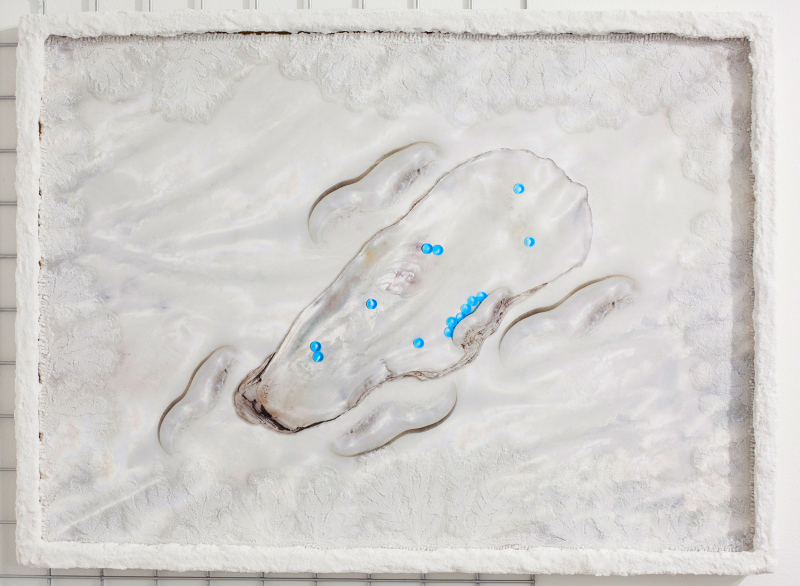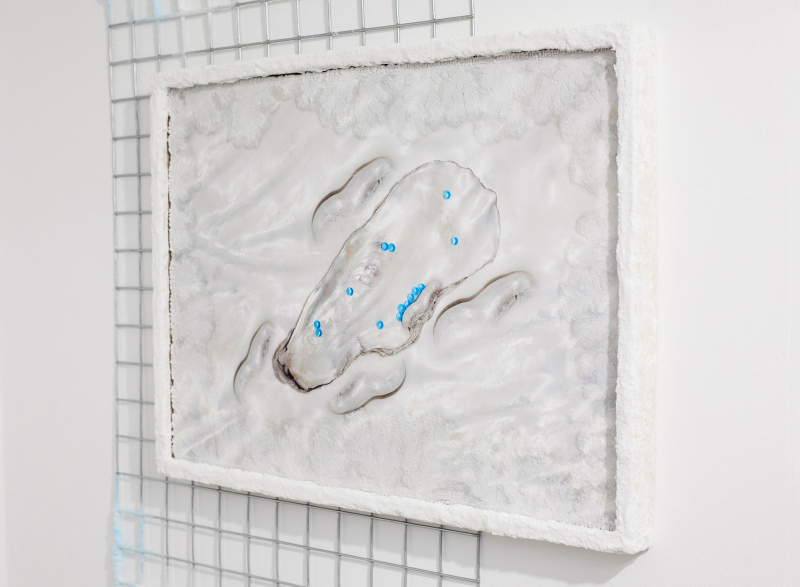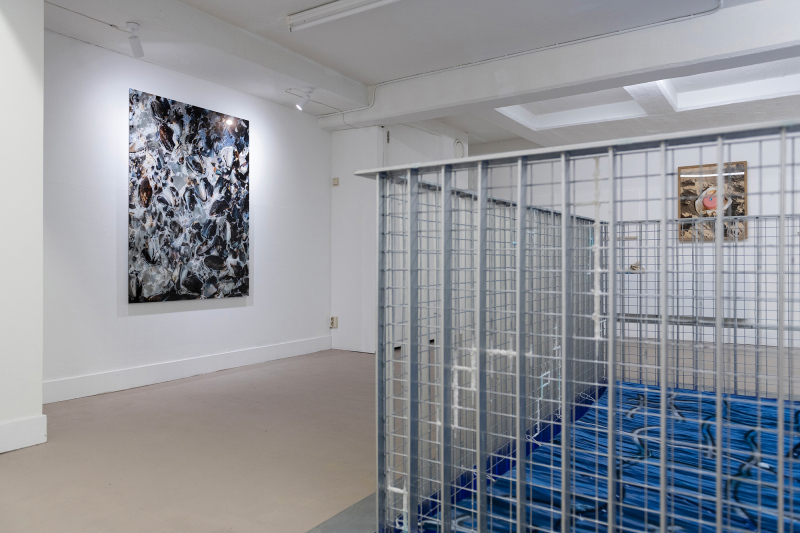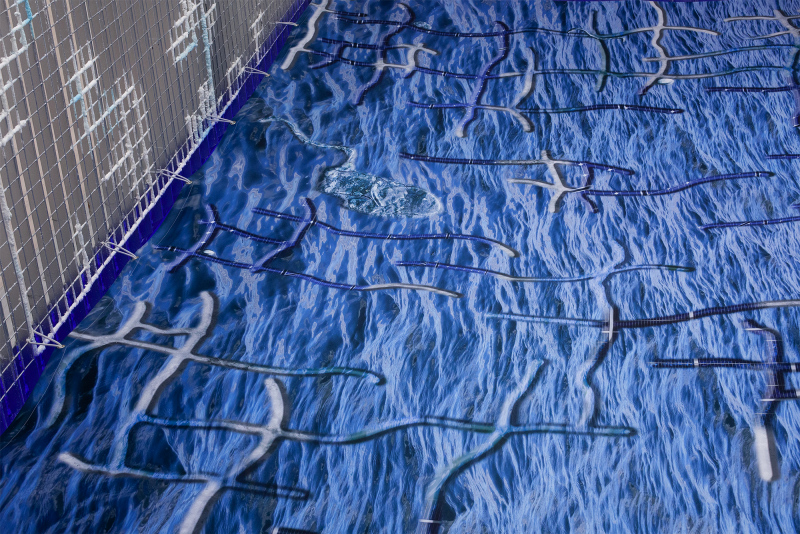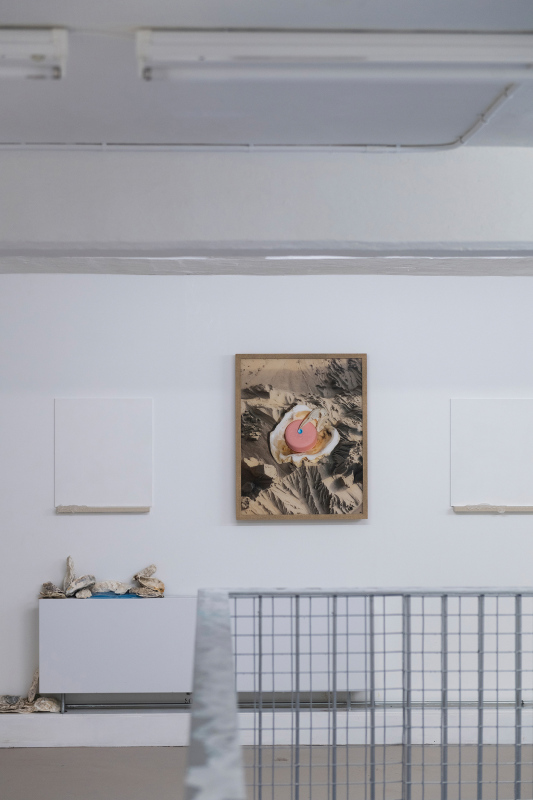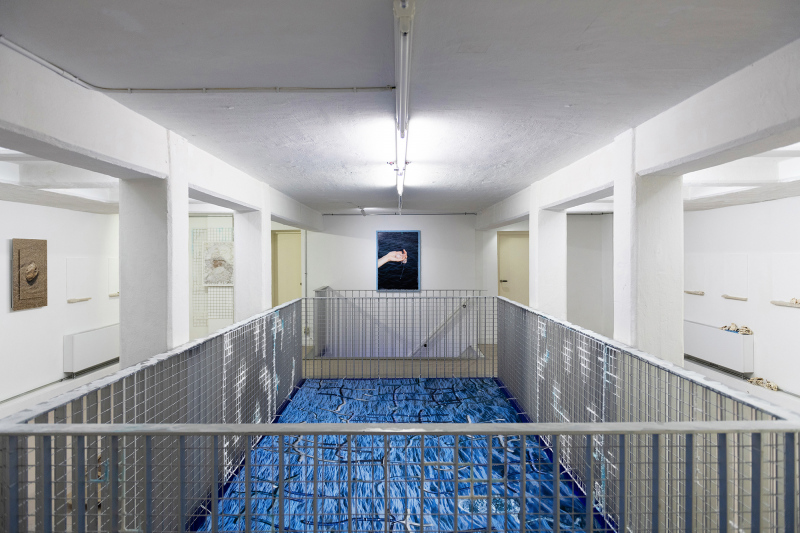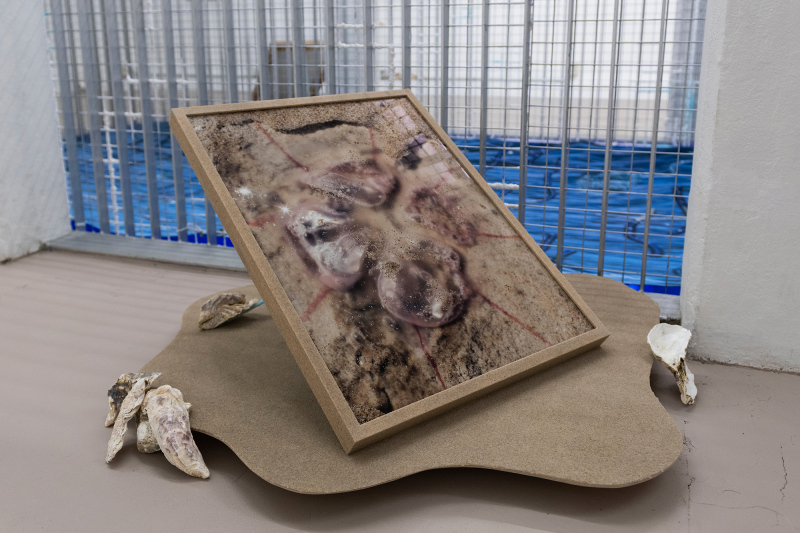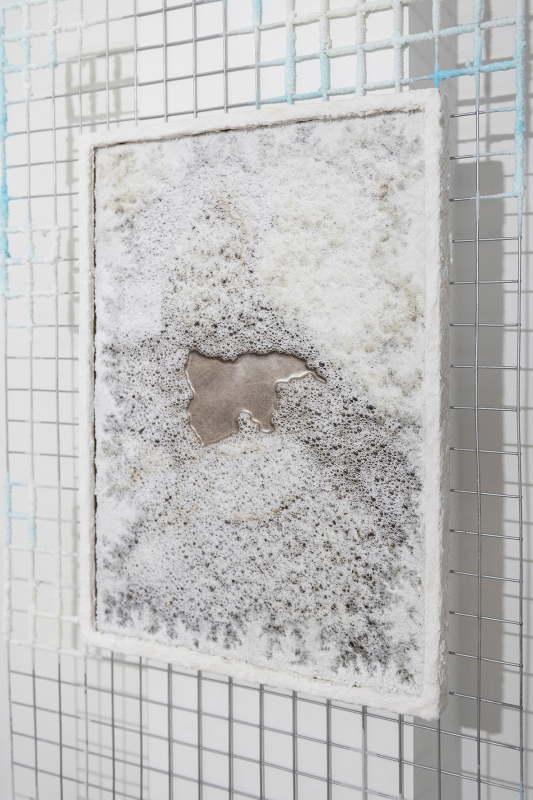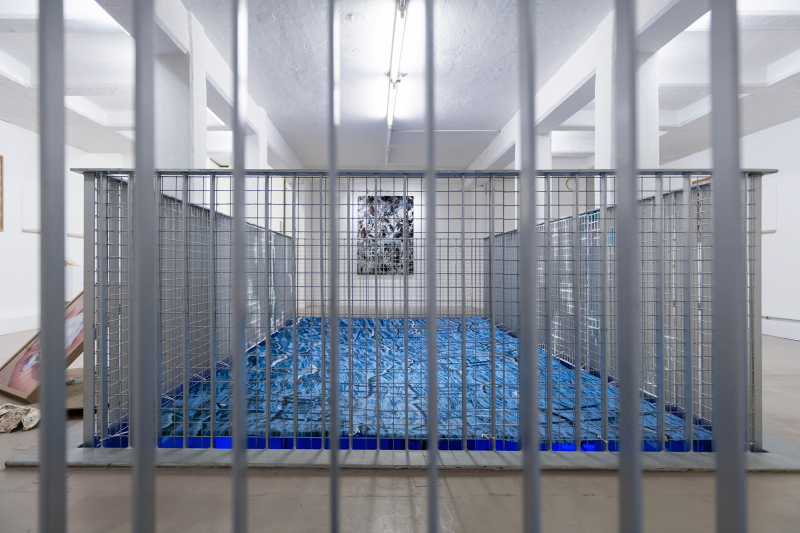Solo show at A Tale of a Tub
Part of Trade Winds in the Age of Underwater Current, curated by Niekolaas Johannes Lekkerkerk. Series of 3 solo shows, among with Sami Hammana and Elisa Strinna.
Kristina Õllek’s solo show at A Tale of A Tub in Rotterdam, 29.05.–08.08.2021.
Kristina Õllek’s solo show at A Tale of ATub is part of a three solo exhibition series titled as Trade Winds in the Age of Underwater Currents, with Elisa Strinna and Sami Hammana, curated by Niekolaas Johannes Lekkerkerk. A Tale of A Tub presents three solo exhibitions of artists who, in different ways, research the phenomena of deep sea mining, coastal ecology and underwater cable networks. The artists involved connect different voices and perspectives together to generate awareness on how extraction through deep-sea mining and the construction of cable infrastructures depletes and pollutes the soils of seas and oceans, and contributes to loss of biodiversity in underwater and coastal ecosystems. In her artistic practice, Kristina Õllek (EE) investigates the changing ecological composition of the Dutch coastline and sheds a critical light on the excavation of minerals such as cobalt, nickel, silver and manganese from the seabed, to employ them for the production of renewable energy technologies in the so-called blue economy.
As part of Trade Winds in the Age of Underwater Currents, she presents—in addition to new and more recent work developed in response to the space of A Tale of A Tub—installations from two different series.
In the Nautilus New Era series (2018), Õllek references the classic science fiction novel Twenty Thousand Miles Under the Sea (1870) by Nantes-born au- thor Jules Verne. In the story, Captain Nemo reports to Professor Arronax about valuable minerals on the sea floor and future possibilities of deep sea mining. Approximately one hundred and fifty years later, this fictional scenario has be- come reality. Global demand for minerals such as copper, cobalt and manganese has increased, driven by the growth of digital applications, renewable energy tech- nologies and the so-called blue economy. These developments reached a historic milestone in 2018 when Canadian company Nautilus Minerals Inc. launched the first vessel for the commercial use of deep-sea mining: the Nautilus New Era. The operation aimed to extract lucrative metals such as gold, silver, cobalt and nickel from the seabed near Papua New Guinea. In Verne’s novel, a submarine for a similar expedition—surprisingly—also bears the name Nautilus. Under the same title as the controversial vessel, Õllek’s multimedia installation represents a ‘seabed’ in itself, in which artificial elements and materials associated with soil exploration and mining open critical perspectives on the deep-sea environment and its excavation.
In the series Filters Feeders, Double Binds & Other Silicones (2019-ongoing), Õllek again starts from research and personal observations around anthropocen- tric influences on marine ecology, only this time she focuses on the coastal area of the North Sea. On the Dutch coast, aquacultures such as mussel and oyster farms are a prominent industry, with Zeeland at its center: a province largely below sea level and one of the most man-made regions of The Netherlands. In 1953, the most devastat- ing flood in Dutch history took place there—de Watersnoodramp—after which the Delta Works were constructed, turning the landscape into an artificial and alienating territory. In 2018-2020 Õllek lived on the Dutch coast, and developed an interest in so-called filter feeders: blue mussels, oysters and a growing jellyfish population that act as filters for polluted water and are therefore also considered to be engineers of the ecosystem. In the installation comprising photographic and sculptural elements, Õllek thinks together with the North Sea and provides insight into the changing composition of the Dutch coastal ecology and marine chemistry. The result is a site-specific analysis of anthropocentric tendencies that Õllek questions from the perspective of a future archaeology.
________________________
Text: part of the exhibition publication “Sea, Shore, See, Sure?” by curator Niekolaas Johannes Lekkerkerk and Joost Nikkessen.
This exhibition is made possible with the support of the Municipality of Rotterdam, the Mondriaan Fund, and M.A.O.C. Gravin van Bylandt Stichting. The public program is realized in collaboration with the Embassy of the North Sea. Kristina Õllek’s presentation has been made possible with support from the Cultural Endowment of Estonia, the Estonian Contemporary Art Development Center, the Estonian Embassy in The Hague, and Plado Art Service.
Special thanks: Kert Viiart.
Installation views: LNDW Studio and Kristina Õllek.

